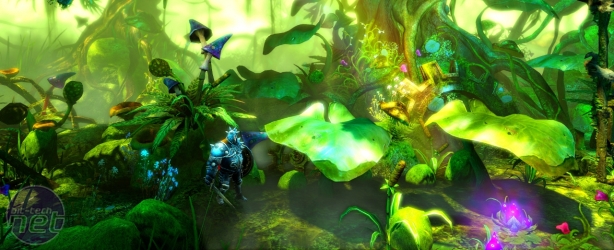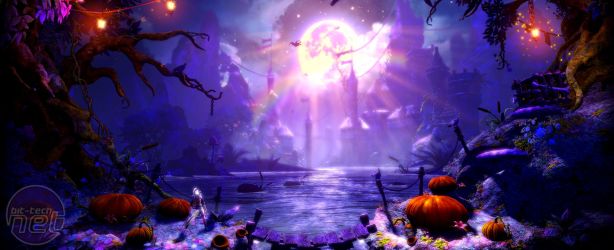
Trine 2 Review
Publisher: FrozenbytePlatform: PC, Xbox 360, PlayStation 3
UK Price (as reviewed): £11.99 (inc VAT)
US Price (as reviewed): $15.99 (ex tax)
You can initially approach Trine 2 in two different ways, with the main variable being whether or not you’ve played the original game before or not. If you haven’t played the first Trine then your immediate reaction will probably be a confused expulsion of vowel sounds, followed by some comment about how gorgeous Trine 2 looks.
If you have played the first Trine, however, then you’ll first expel a high-pitched squeaky noise of the type usually reserved for watching babies eat lemons as you realise that the old trio of characters is back. Then you’ll notice how good the game looks – See Paragraph One for details.
The point is that Trine 2 is one of the prettiest games we’ve ever seen, even despite the fact that it’s ostensibly something as old hat as a physics-based platform game. It’s ludicrously beautiful to look at, with detail and wild flourishes of colour lavished into every level, which themselves range from dark forests infested with mutant mushrooms through to airy canopies lit by sunrise.
The trio of characters you play might operate on just two dimensions of movement, but the background of every level is saturated with flairs of artistry, from fireflies that flit around torches to silhouetted goblins that stalk your progress. Alternately attractive and menacing, developer Frozenbyte shows the type of skill usually seen only in the best Disney and Pixar films, which prove a salient touchstone given the fairy tale focus.
The story picks up an indeterminate number of years after the first game, which saw three heroes bound together and sent on a quest to save the kingdom by a mysterious magic jewel – the eponymous Trine. At first it’s not clear why the Trine has returned and bound the heroes together again, but it quickly emerges that a new threat looms over the world – though to say anything more would ruin the surprise.
Needless to say, the three heroes embark on their quest, their souls bound to each other so that, in singleplayer, only one character can be controlled at a time – the other two are absent until switched around. As with the first game, it’s in this formation that Trine proves its most challenging, as the player can only access one set of skills at a time; the Wizard’s telekinesis, the Warrior’s strength or the Thief’s arrows and grapple. The abilities have been expanded upon a little, with frost arrows and monster levitation showing up as you advance in levels, but the core skills remain unchanged from the first game.
Again, it’s in multiplayer where Trine 2 really starts to shine, especially with the introduction of online co-operative modes to bolster the original’s offline co-op mode. Here, up to three characters take a role each and can use their abilities to complement each other – the Wizard lifting enemies into range of the Thief’s bow, for example. It certainly makes most of the puzzles a lot easier too; what might take ten minutes to orchestrate in singleplayer takes mere moments to stumble through in co-op.
While it’s easy to praise the introduction of online multiplayer for those without a spare controller, though, it’s clear from what we’ve played that Trine 2 is best played in local co-op, with everyone in front of one screen. This not only makes it more fun to interact with the game and grief your friends, but also makes orchestrating solutions to puzzles a lot easier, as you can point at the screen directly instead of having to yell vague directions down a microphone.

MSI MPG Velox 100R Chassis Review
October 14 2021 | 15:04











Want to comment? Please log in.